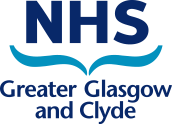Opioid Prescribing Tips
This is second in a series of blogs on opioid safety
General key messages
-
Ensure correct drug, dose and formulation prescribed
-
Be aware of dose equivalence between different opioids and different routes of administration of the same opioids
-
If prescribing a regular strong opioid (e.g. morphine, oxycodone), ensure any weak opioid prescribed is stopped (e.g. codeine, dihydrocodeine, tramadol) to minimise side effects
-
Fentanyl patches are not appropriate for opioid naïve patients due to potency
-
Patients on Modified Release (MR) opioids for chronic pain generally don’t require ‘PRN’ opioids
-
If required, breakthrough dose should be 1/6th to 1/10th of the total 24 hour regular opioid dose
Correct opioid/formulation
-
When prescribing, ensure correct drug, dose and formulation are selected from the prescribing system.
-
Do not confuse oxycodone with morphine. They are different drugs and are NOT interchangeable.
-
Be familiar with IMMEDIATE release (IR) and MODIFIED release (MR) preparations as they are NOT interchangeable.
IMMEDIATE release act quickly and can be given ‘as required’ for breakthrough pain.
MODIFIED release are used to control background pain over a 24 hour period.
-
Most MR preparations of morphine and oxycodone are designed for 12 hourly administration with the exception of some preparations that are designed to be taken once daily (e.g. MXL® (morphine) capsules and Onexila® XL (oxycodone) tablets). Please be aware of the dosing instructions for the brand of opioid prescribed.
-
Refer to posters developed for Acute in the North and South sectors of NHSGGC.
Examples
(Note, if viewing table on a mobile device, switch to landscape)
| Opioid | Modified release (MR) brands | Immediate release (IR) brands | Prescribing tips |
| Oxycodone |
Oxypro®* (tablets) Longtec® (tablets) OxyContin® (tablets) |
Shortec®* (capsules) OxyNorm® (capsules, oral solution) |
Prescribe MR tablets and IR capsules by brand. Prescribe IR liquid generically. |
| Morphine |
Zomorph®* MST® |
Oramorph® (oral solution) Sevredol® (tablets) |
Prescribe MR by brand and IR generically. MST® tablets are useful for |
*Products in bold are NHSGGC preferred brands
Correct dose
Patients currently on a strong opioid on admission to hospital
-
Check two sources to ensure the correct drug, dose and formulation prescribed.
-
Be aware, ECS may include a number of different preparations/strengths particularly if the patient has had their dose titrated. Opioids may be in the ‘Acute’ rather than ‘Repeat’ medication section. Always check with the patient/carer.
-
Review breakthrough required during hospital admission to determine if MR opioid needs amended.
Note. Patients on MR opioids for chronic pain generally don’t require ‘PRN’ opioids. Please be mindful of prescribing in the acute setting. Refer to Opioid Prescribing for Chronic Non Malignant Pain.
Opioid naïve patients
-
Check the indication and refer to appropriate guidelines (see further information below).
Note. Fentanyl patches are not appropriate for opioid naïve patients as are too potent.
General points on prescribing
-
Consider patient factors and monitor for any changes e.g. renal function (rising creatinine during treatment/on admission to hospital), hepatic function, elderly, low weight which may impact on drug choice/appropriateness (see Choosing and changing opioids)
-
Balance risk of toxicity versus efficacy
-
Consider effectiveness of opioid and type of pain. The addition (or dose titration) of adjuvant therapy (e.g. paracetamol, NSAID, antidepressant/anticonvulsant for neuropathic pain) may be more appropriate than increasing opioid dose in some patients.
-
Breakthrough/PRN dosing:
If needed, prescribe 1/6th to 1/10th of the 24 hour regular opioid dose as required.
Ensure appropriate time intervals are stated. Extra care needed with ‘hourly/two hourly PRN’ regimens which are generally only prescribed for short term use (with the exception of palliative care)– add a “maximum” number of doses in these cases e.g. “if greater than 6 doses needed in 24 hours” or “3 doses within 6 hours” then “seek medical review”.
It is good practice for all opioid prescriptions to have a maximum frequency.
For information on prescribing ‘PRN’ opioids in Acute on HEPMA, refer to
HEPMA - Palliative Care Overview available on StaffNet.
Switching (choosing and changing opioids)
-
If starting a regular strong opioid (e.g. morphine, oxycodone), ensure any weak opioid prescribed is stopped (e.g. codeine, dihydrocodeine, tramadol). There is no analgesic benefit to continuing a weak opioid, however, it may contribute to side effect burden.
-
Be aware of dose equivalence between different opioids and different routes of administration of the same opioids.
Eg. Morphine IV/SC is approximately twice as potent as oral so do not prescribe the same dose.
Oral oxycodone is twice as potent as oral morphine.
-
Use a reliable calculator to convert between opioids e.g Pain Management Opioid Dose Converter (paindata.org)
-
Refer to Scottish Palliative Care Guidelines for basic principles.
-
Consider reducing the dose by up to 30% when changing opioid because of differences in pharmacokinetics and pharmacodynamics, including incomplete cross tolerance.
Further information:
Opioid Prescribing for Chronic Non Malignant Pain
GGC Medicines - Prescribing Notes for Acute Pain
GGC Medicines - Prescribing Notes for Palliative Care and Persistent Pain in Older Patients
GGC Medicines - Reversal of Opioid-induced Respiratory Depression
Refer to other blogs in the opioid series:
Opioid Safety - Key safety tips
Published 05/05/2023. Links updated 23/05/2024. Medicines Update blogs are correct at the time of publication.
If you would like to subscribe to Medicines Update or provide feedback on the blogs, email medicines.update@ggc.scot.nhs.uk.
Follow Medicines Update on Twitter @NHSGGCMeds
